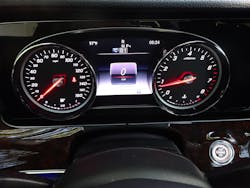University of Extrication: Skills Update: Vehicle Shutdown
Topic: Vehicle Automatic Stop-Start System
Objective: Adapt and update procedures for shutting down a crash-damaged vehicle when an automatic stop-start system is present and operational.
Task: The rescue team shall study the basic operational features of various vehicle automatic stop-start systems and be able to assure vehicle shutdown at a real-world incident scene if this system is present and operating on a crash-damaged vehicle.
Responders remain focused on being proficient at shutting down crash-damaged vehicles, especially when injured occupants are inside or when extrication tasks are to be performed. We don’t want these vehicles to roll away or otherwise cause us unexpected problems. We don’t want any arcs or sparks; no accidental airbag deployments either. Typically, a rescue team already has a procedure to ensure that the crash vehicle is shut down and stabilized.
Vehicle rescue shutdown procedures are relatively simple and effective:
1) Chock at least one drive wheel
2) Get inside and put the vehicle in “Park”
3) Set the parking brake
4) Turn the ignition off
5) Take away the 12-volt electrical power
A relatively new fuel-saving technology referred to as automatic stop-start is becoming more popular and is a system that can complicate existing vehicle shutdown protocols. Stop-start systems first appeared in vehicles in the U.S. with the 2013 Ford Fusion. Currently, almost all major manufacturers offer this system for their cars, SUVs and even some pickup trucks.
The design of automatic stop-start system is easy to understand. When the motorist stops at a traffic light, for example, instead of idling, the vehicle’s engine completely stops running. When the driver lifts their foot off the brake pedal, the engine restarts instantly. With a manual transmission, the engine starts when the clutch pedal is released. While stopped, the vehicle uses no fuel and has no emissions, so that is where the fuel-savings factor comes into play.
What can potentially challenge rescue personnel is that as you approach the occupied crash-damaged vehicle, the vehicle’s engine may not be running. Sensing that the engine is stopped may lull you into thinking the vehicle is shut down. If, however, the automatic stop-start system is operational and the driver (your patient) still has their foot on the brake, all of the car’s normal systems (such as instrument lighting, the radio, air conditioner, etc.) will be powered up as normal; just the engine will be off and silent.
If the driver lifts their foot off the brake pedal before you get inside the vehicle to put it in Park and get the ignition turned off, the engine that was “off” as you approached the vehicle will instantly start up. For a fellow rescuer reaching under the hood or if the vehicle is in gear and the drive wheels have not been chocked, this can be an issue. Typically, the engine will also restart if the heater or air conditioner system needs additional heating or cooling or if the battery needs charging.
Most stop-start systems will not work if the driver is unbuckled or if a door is opened. What that means is, under the right conditions, just opening a door to access the seated driver/patient could cause the engine to start up.
Protocols for vehicle shutdown need to include the five basic steps presented earlier. Once everything is taken care of inside the vehicle, the final step of shutting down the battery can take place. With automatic stop-start systems, the 12-volt battery may actually be a new type called an absorbed glass mat (AGM) battery. For rescuers, shutting it down by disconnecting or cutting cables is exactly the same as with the familiar lead-acid battery.
About the Author
Ron Moore
RON MOORE, who is a Firehouse contributing editor, recently retired as a division chief with the McKinney, TX, Fire Department and now serves with Prosper, TX, Fire Rescue. He self-published the Vehicle Rescue 1-2-3 training manual and serves as the forum moderator for the extrication section of Firehouse.com . Moore can be contacted directly at [email protected].

